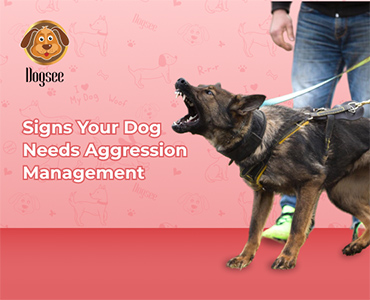
As a pet parent, you may have witnessed the peculiar phenomenon of dog trancing – when our furry friends get lost in a trance-like state under hanging objects or bushes. It is as if they're in their little world, pondering the mysteries of the universe or perhaps dreaming of endless fields of our Dogsee treats. Initially, it might seem concerning to you, but it is normal behaviour.
According to experts, trance-like syndrome (TLS) — also known as "ghost-walking," "weed-walking," or simply "trancing" — is typically a harmless behaviour in dogs. However, what causes our canine companions to behave this way around low-hanging objects? And could this peculiar habit ever signal an underlying health concern or behavioural problem? This blog will help you understand trancing in dogs, what causes trancing and how to manage dog trancing.

What is Dog Trancing?
Dog trancing is a condition where a dog enters a state akin to a trance, begins to walk slowly, lowers its head, and becomes rigid. They frequently stop responding to commands from their pet owners and other outside stimuli. A common instance pet parents may notice is dogs trancing under plants or curtains. It can last anywhere from a few seconds to thirty minutes, but calling the pup's name can quickly end this trance.
You might ask, is there any particular breed that displays this behaviour more? Some breeds like Salukis, Greyhounds, Bull Terriers, and Whippets are more likely to exhibit it. This behaviour is also observed more frequently in dogs that exhibit indications of canine compulsive disorder (CCD), like chasing their tail repeatedly.

What causes Dog Trancing?
Both pet parents and veterinarians are still perplexed by the cause of trancing. Because atypical seizures can result in changed mental activity and strange behaviours, some have believed it to be similar to an obsessive-compulsive disorder or even a seizure. It's unclear, though, if these problems are related to it. According to some pet experts, shrubbery or household items like hanging curtains or tablecloths make dogs feel good when moving it along their backs.
TLS behaviour typically doesn't indicate a serious issue with the dog. Although trancing behaviour may seem odd and mysterious to canine specialists, it is not a sign of behavioural or medical issues in itself. It is not a cause for concern if trancing is not accompanied by any other symptoms.
According to some pet parents, after witnessing another dog trancing, some non-trancing canines start trancing as well. However, TLS is not considered a learned behaviour among dogs. It arises spontaneously and is thought to be an individual quirk rather than something dogs mimic from one another. Dogs that exhibit trancing tend to do so in specific environments or situations, such as walking under low-hanging objects. While a dog observing another trancing dog might show curiosity or imitate the behaviour out of exploration, there’s no evidence to suggest it becomes a habitual or true trancing behaviour in the second dog. Trancing is more likely linked to a dog’s unique sensory or neurological response than social learning.
How to Manage Dog Trancing
It needs to be understood that dog trancing is not a medical behaviour and hence does not require any treatment. If you catch your pup trancing, you can leave them be, as they will eventually come around. Despite its oddness, it appears to be a reassuring method for the majority of dogs. They might even benefit from trancing.
As pet parents, you must realise that dog trancing is not the same as seizures. If you call out to your pet when they are in a hypnosis-like condition, they will respond by barking to you, glancing at you, or even readjusting their ears to improve their hearing. On the other hand, your pets will behave completely differently during and after seizures, and they won't answer your calls.
You can monitor the trancing episodes if they are followed by any symptoms such as vomiting, spasms, drooling, or collapse. These symptoms are cause for concern even without dog-trancing symptoms, so don’t hesitate to contact your veterinarian.

Conclusion
Dog trancing, often seen as a quirky behaviour, is when a dog enters a seemingly trance-like state by standing motionless near certain objects or surfaces. While it may look like something out of a canine magic show, there's usually no cause for concern. Dogs might engage in trancing due to curiosity, relaxation, or even just for fun. So, unless your furry friend starts levitating or predicting the future, there's no need to worry. Just sit back, enjoy the show, and consider yourself lucky to witness your dog's inner zen master at work!
Frequently Asked Questions (FAQs):
1. What is dog trancing?
Answer: Dog trancing, or trance-like syndrome (TLS), is a behaviour where a dog moves slowly and deliberately, often appearing to be in a trance, typically when in contact with low-hanging objects like plants, curtains, or tablecloths.
2. Which breeds are most likely to trance?
Answer: While any breed can exhibit trancing, it is more commonly observed in sighthound breeds such as Greyhounds, Whippets, and Bull Terriers.
3. Is trancing the same as zoning out?
Answer: No, trancing is a deliberate, slow movement often triggered by environmental factors while zoning out is usually unrelated to external stimuli.
4. How long does a trancing episode last?
Answer: Trancing episodes are typically short, lasting a few seconds to a few minutes, and end when the dog moves away from the triggering object.
5. Should I stop my dog from trancing and when should I consult a vet about trancing?
Answer: If your dog seems comfortable and happy, there’s no need to intervene. However, if trancing leads to distress or unusual behaviour, it’s worth monitoring. If your dog’s trancing is accompanied by symptoms like seizures, disorientation, or changes in behaviour, seek veterinary advice to rule out medical issues.
For more such information on pet behaviour and pet treats visit - Dogsee Chew.
 HELPFUL0 people found it helpful
HELPFUL0 people found it helpful
Related Blogs
Subscribe to Our Blogs
and never miss on the latest update!



















